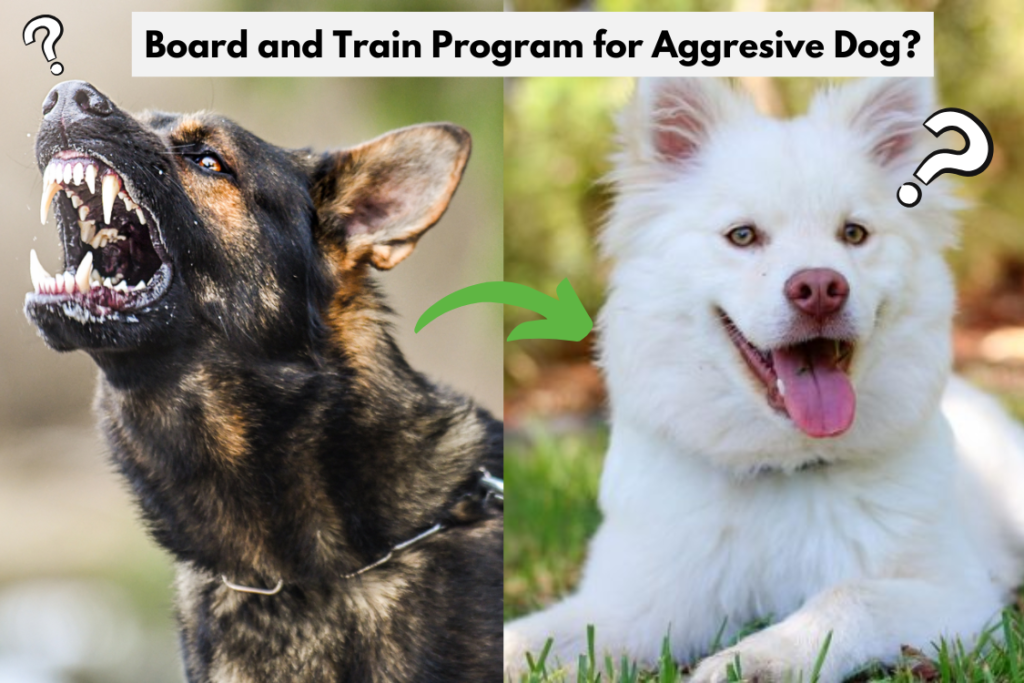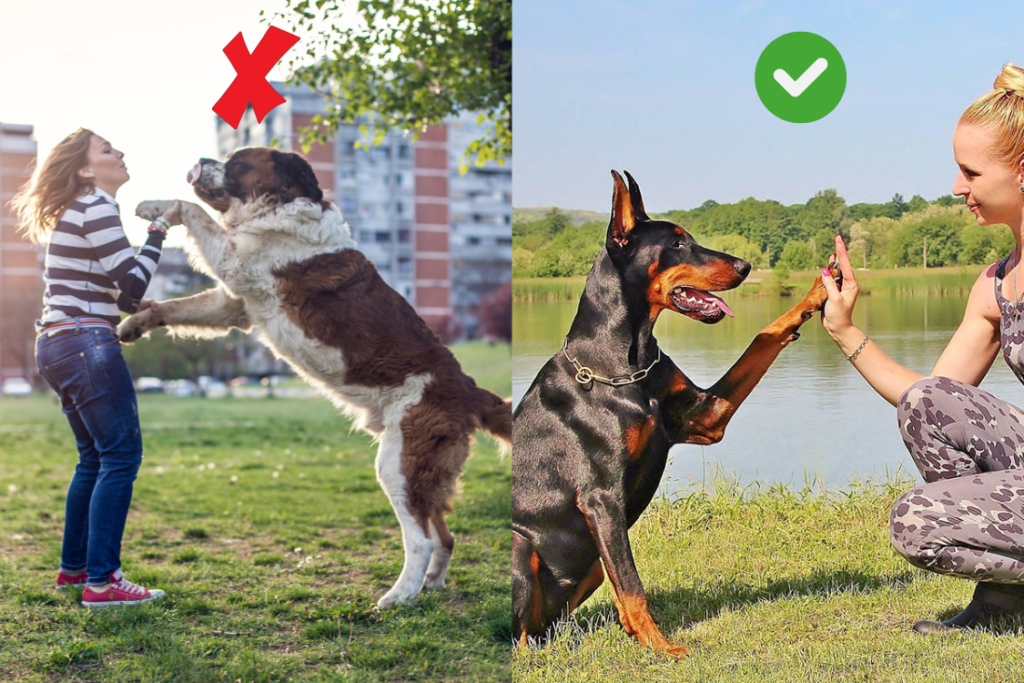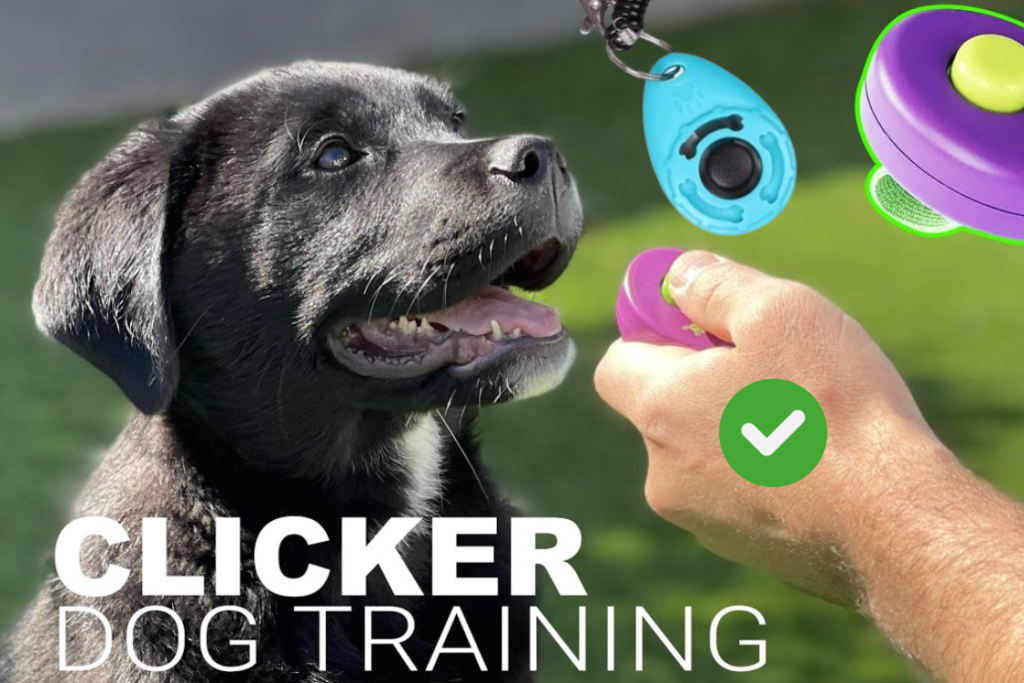If your dog is showing signs of aggression, it can be stressful, confusing, and even scary. You may have heard of “board and train” programs as a possible solution—but are they really the right fit?
What Is a Board and Train Program?

A board and train program is where your dog stays at a professional trainer’s facility—like a training camp for dogs. Over a few weeks, they receive daily training to improve behavior and reduce aggression.
For aggressive dogs, this setup can be useful because:
- Trainers work with them in a controlled setting.
- The structure helps build new habits.
- Your dog gets consistent attention and correction from experienced professionals.
But board and train is not a “magic fix.” Let’s explore how it actually works.
How It Works for Aggressive Dogs

Dogs with aggression may act out due to fear, anxiety, frustration, or lack of training. Trainers at these programs create a plan tailored to your dog’s triggers.
They may work on:
- Leash aggression (lunging or barking on walks – 7 Expert Tips for a Calm & Controlled Dog Walk)
- Resource guarding (growling over food or toys – Stop Food Aggression in Dogs: 5 Effective Methods)
- Fear-based aggression (nervousness around people or dogs)
- Territorial aggression (protective behavior at home)
Common training tools include:
- Positive reinforcement – rewarding good behavior with treats.
- Desensitization – exposing your dog slowly to triggers in a safe way
- Counter-conditioning – teaching your dog to respond calmly instead of aggressively
The goal is to help your dog stay calm and under control in situations that used to trigger aggression.
What Happens After the Program Ends?

This is where many owners get surprised: the training doesn’t stop when your dog comes home.
To keep up progress, you need to stay involved. The trainer should show you how to handle your dog and reinforce the training at home.
Many good programs offer:
- Follow-up sessions
- Written or video instructions
- Support via phone or email
⚠️ If you don’t keep up with training at home, your dog may fall back into old habits.
How to Choose the Right Program

Not all board and train programs are the same. Some are excellent. Others, not so much. When choosing a program for an aggressive dog, keep these things in mind:
✅ Look for:
- Trainers with experience in aggression cases
- Positive, science-based methods (not harsh corrections)
- Clear communication and updates during your dog’s stay
- Involvement and training for you, the owner
❌ Avoid:
- Trainers who use punishment or force-based tools as the main method
- Programs that promise unrealistic “quick fixes”
- Places that don’t let you visit or observe training
Ask questions like:
- How will you handle my dog’s aggression?
- What happens if my dog doesn’t respond well?
- What support will I get after the program ends?
Is Board and Train Right for Your Dog?

This type of program isn’t for every dog—or every owner. Here’s when it can help:
- Your dog’s aggression feels too intense to manage on your own.
- You’re looking for fast, focused progress.
- You’re willing to follow up with training after the program ends.
But it might not be the best fit if:
- Your dog’s aggression is mild and could improve with a local trainer.
- You’re uncomfortable sending your dog away.
- You can’t commit to maintaining the training after they return.
Other Options to Consider

If board and train doesn’t feel like the right fit, don’t worry—there are other ways to get help:
- Local trainers: Work with someone one-on-one in your area. (Here’s a guide on how to choose the right trainer).
- Online dog training: Some online programs, like Doggy Dan’s Online Dog Trainer which is created by over decade experienced trainer and offer step-by-step help for common behavioral issues—like reactivity and fear-based aggression—without needing to leave your home.
Online programs can be a good starting point if your dog’s aggression is manageable or you’re waiting for a spot with a local trainer.
Final Thoughts: Be Patient, Stay Committed

Aggressive behavior can be frustrating—but it doesn’t mean your dog is “bad.” It just means they need guidance, structure, and calm leadership.
A board and train program can help, especially if you choose a reputable one and stay involved in your dog’s training after they return home.
At the end of the day, it’s not about finding the quickest fix—it’s about building a better relationship with your dog and helping them feel safe, understood, and supported.
With time and consistency, even difficult behaviors can improve. You’ve got this!



